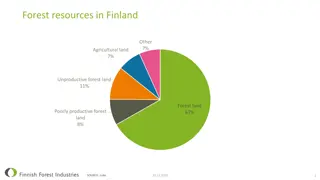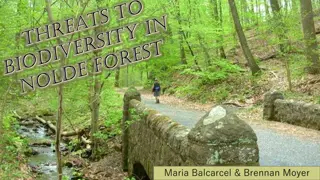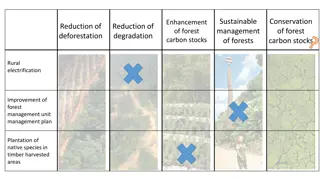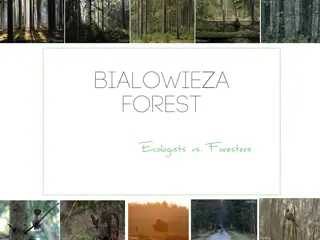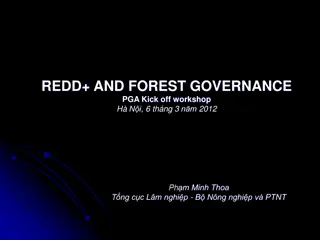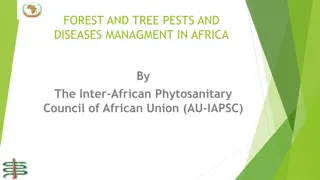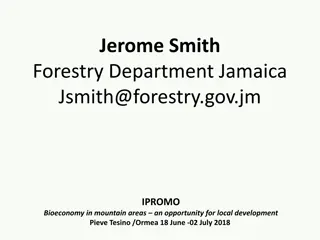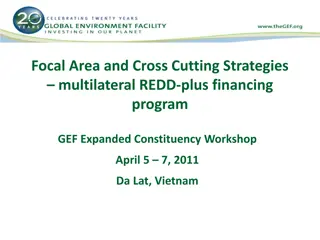Understanding Forest Classification and Management
Explore the classification of forests based on age, regeneration, composition, management objectives, and ownership. Learn about even-aged and uneven-aged forests, natural vs. man-made forests, pure vs. mixed forests, and protection, production, and social forests. Discover the various factors that play a role in forest management and conservation.
Download Presentation

Please find below an Image/Link to download the presentation.
The content on the website is provided AS IS for your information and personal use only. It may not be sold, licensed, or shared on other websites without obtaining consent from the author. Download presentation by click this link. If you encounter any issues during the download, it is possible that the publisher has removed the file from their server.
E N D
Presentation Transcript
Mrs. Sonia Panigrahi Assistant Professor
Classification of Forests: By Champion and Seth 1968. Forests can be classifed on the basis of: 1. Age 2. Method of regeneration 3. Composition 4. Ownership 5. Object of Management 6. Growing Stock
Classification of Forest On the Basis of Age: 1. A) EvenAged Forest: Even-aged forests, also called regular forests are those consisting of even - aged woods. Even - aged wood means trees of approximately the same age. True even - aged forests can be only man - made forests. In case of forests, which regenerate naturally, some age difference is often allowed. Differences up to 25% of the rotation are usually allowed in cases where forest is not harvested for 100 years or more. B) Un-Even Aged Forests:A forest is called uneven - aged or irregular when trees vary widely in age.
2. Classification of Forest On the Basis of Regeneration Forests are identified into A. High Forest: When regeneration is obtained from seed B. Coppice Forest: When regeneration is through coppice or some vegetative part of the tree. 1. Natural Forest: When the regeneration is obtained naturally, the forests are called natural forests 2.Man Made Forest: When it is obtained artifcially, the forests are called Man-made forests or Plantations.
3. Classification of Forest On the Basis of Composition A. Pure Forests: Pure forests are composed almost entirely of one species, usually to the extent of not less than 50 pe cent. B. Mixed Forests: Mixed forests are defned as forest composed of trees of two or more species intermingled in the same canopy.
4. Classification of Forest On the Basis of Management: A. Protection Forests: Protection forests are those which are managed primarily for ameliorating climate, checking soil erosion and foods, conserving soil and water, regulating stream flow and increasing water yields and exerting other beneficial influences. B. Production Forests: Production forests are those which are managed primarily for their produce. C. Social Forests: Social forests where the produce is utilised by neighbouring society.
5. Classification of Forest On the Basis of Ownership: A. Government Forests: On the basis of Legal status, Government forests are further classifed into: a. Reserved Forests: AReserved forest is an area with complete protection, constituted according to chapter II of the Indian ForestsAct. 1927. b. Protected Forests: A Protected forest is an area subject to limited degree of protection constituted under the provisions of chapter IV of the Indian ForestAct., 1927.
c. Village Forests: A Village forest is a state forest assigned to a village community under the provisions of chapter III of Indian Forest Act. B. Private forests C. Forests owned by Corporations, Panchayats, Societies and other Agencies.
6. Classification of Forest On the Basis of Growing Stock: A. Normal Forest: A Normal forest is an ideal forest with regard to growing stock, age class distribution and increment and from which the annual or periodic removal of produce equals to the increment and can be continued indefnitely without endangering future yields. B. Abnormal Forest: Abnormal forest is one which is not normal, i.e. growing stock, age, class, distribution of stems, increment, etc. are either in excess or more usually in difcit than the normal forest.










